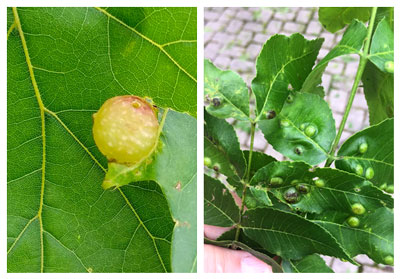Question of the Week: April 27, 2017
“Neil, what are these growths on my red oak and pecan leaves? What should I do about them?”
I’ve heard these questions many times recently, even dating back several weeks.

You have your gall…
These are both insect galls. Shumard red oaks will have round growths that can become as large as tennis balls. They’re full of lightweight fibers and one larval insect. Eventually they turn brown and fall to the ground.
Pecans have phylloxera galls. They’re caused by tiny gnats that lay their eggs within the newly developing leaf surfaces. The wart-like growths develop with the insects inside them. At some point in the next several weeks, these impacted leaves will fall to the ground, the gnats will escape and the process will start over again for another year. You will not see another generation of the galls this year.
The good news is that there is no significant harm done to either tree with these (or any other) leaf or twig galls. Plus, there is absolutely nothing you can do to control or prevent them. The female insects visit the trees long enough just to lay eggs and then they’re gone.
(In fairness, you can get some degree of prevention of pecan phylloxera galls by spraying the trees with horticultural oil in late January or early February, but it’s difficult to do and it’s really not economically practical since the galls have such minor effect on the trees.)
Just ignore these galls and the “problems” will soon pass.
(Same basic things apply to wooly oak and woody oak galls on live oaks, except they do continue to appear through the growing season. But there is still no way to prevent or control them.)
Want to know lots more about galls?
Here’s what our friend Dr. Mike Merchant with TAMU Extension Entomology has written.
